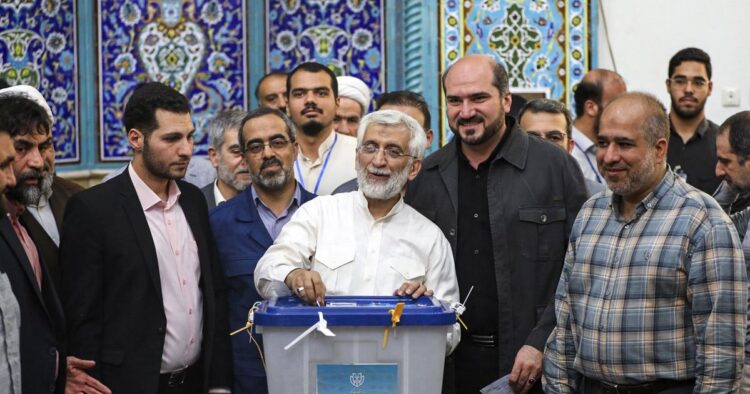Today, Iranians are voting in the final round of a presidential election. Voters face a choice between Saeed Jalili, a veteran hardliner, and Masoud Pezeshkian, a reformist who supports working with the West. However, many expect a low turnout, which critics say shows opposition to the Islamic Republic.
The two candidates offer very different visions for Iran’s future. Jalili has been close to the centers of power for 20 years and supports Ayatollah Ali Khamenei, Iran’s supreme leader. On the other hand, Pezeshkian is seen as an outsider who wants to reform the country and cooperate more with other nations.
Jalili argues that Iran has successfully bypassed international sanctions. In contrast, Pezeshkian and his ally, former foreign minister Javad Zarif, believe that these sanctions have isolated Iran from the world.
Campaign Rallies Reflect the Divide
Jalili held his final campaign event at the large Imam Khomeini Mosalla mosque. It was a high-tech rally with videos showing Jalili being praised and followed by enthusiastic crowds. The event included songs and chants honoring Qassem Suleimani, a former military leader killed by the U.S. The crowd reacted with great excitement when Jalili appeared on stage.
In his speech, Jalili emphasized that the election’s outcome would impact Iran for decades. He criticized Pezeshkian, saying that he had no confidence in Iran. Jalili portrayed Iran as a powerful and respected nation that could stand up to its enemies.
Pezeshkian’s Supporters Hope for Change
Pezeshkian’s rally was smaller but filled with younger, more affluent supporters. Unlike Jalili’s rally, men and women mixed, and few women wore the traditional chador. Pezeshkian, a heart surgeon, has opposed the government’s suppression of protests, particularly those following the death of Mahsa Amini.
Pezeshkian acknowledged the challenges he would face if elected. He promised to try his best to make changes and said he would resign if he couldn’t fulfill his commitments. His supporters argue that not voting will lead to more censorship and other negative outcomes.
ALSO READ: “Potential Gasoline Price Hike in Iran’s Presidential Runoff May Ignite Fresh Protests”
Election Dynamics and Predictions
Dr. Ebrahim Mottaghi, a political science professor, believes Pezeshkian has a good chance of winning. He thinks more people will vote for Pezeshkian because he came first in the initial round of voting.
Supreme Leader Khamenei rejected the idea that low turnout shows opposition to the system. Mottaghi suggested that Iran is in a period of transition. He compared young Iranians to those in the U.S. and U.K., saying they are critical and feel disconnected from politics. Many young people in Iran use banned social media platforms like Instagram, which has changed how they communicate and think.
Mottaghi noted that many voters feel their vote doesn’t matter, leading to indifference. He likened this feeling to the existentialist novel “The Stranger” by Albert Camus, where people feel powerless and disconnected from their fate.
Today’s vote will determine which vision for Iran’s future will prevail. However, the low turnout and the sense of disillusionment among many voters highlight the challenges facing the country.

















Comments